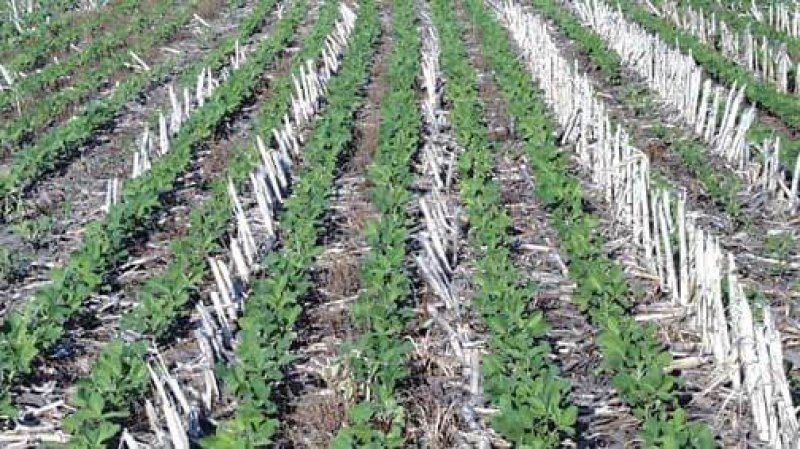No-till farming is considered a key conservation agriculture strategy because it avoids conventional plowing and farming practices. It has been promoted worldwide as a way to meet global food demand but whether or not it works has been unclear.
Conservation agriculture is currently practiced on 125 million hectares of land globally, an area nearly as big as the total U.S. cropland. Three key principles guide the concept: no-till farming (minimizing soil disturbance), protecting the soil with cover crops or leftover crop residue, and rotating the crops. The goals of conservation agriculture are to replace the long-term productivity that has been brought by pesticides and fertilizer. Because conservation agriculture avoids tillage, it is less time-consuming and therefore more cost-effective than conventional farming methods.
The benefits of no till agriculture in reducing carbon emissions is well established. However in recent years, there has been some disagreement about perceived benefits of no-till farming practices on yield, an entirely different question (and a benefit not claimed by advocates of no-tilling). A meta-analysis of 610 peer-reviewed studies found that no-till often leads to yield declines compared to conventional farming. However, in dryland areas it may still be the better option
“The big challenge for agriculture is that we need to further increase yields but greatly reduce our environmental impacts,” said Cameron Pittelkow, part of the University of Illinois faculty who co-authored the study in Nature. “The common assumption that no-till is going to play a large role in the sustainable intensification of agriculture doesn’t necessarily hold true, according to our research findings.”
“This review was a tremendous undertaking and is probably the largest meta-analysis done in agriculture,” said co-author Bruce Linquist, a Cooperative Extension specialist at UC Davis.
After assessing more than 5,000 side-by-side observations, the researchers concluded that on average no-till negatively impacts yields at the global scale, yet several opportunities exist for more closely matching or even exceeding conventional tillage yields.
For example, yield reductions were minimized when the principles of crop rotation and residue retention were also practiced, highlighting the importance of implementing all three conservation agriculture principles as part of an integrated management system rather than no-till alone.
Moreover, when adopted in dry climates in combination with the other two principles of conservation agriculture, no-till farming performed significantly better than conventional tillage, likely due to the higher retention of soil moisture.
Dryland ecosystems are home to 38 percent of the world’s population, and millions of acres of land in arid regions of sub-Saharan Africa and South Asia have been identified as suitable for sustainable intensification. Yet, the authors also caution that practicing no-till in dryland areas without the implementation of the other two principles of conservation agriculture decreases yields.
In regions with moist climates and sufficient precipitation, no-till farming actually resulted in yields that were on average 6 to 9 percent lower than with conventional tillage methods.
“No one has ever stated that there would be a significant decline like this,” said Chris van Kessel, a professor of plant sciences at UC Davis and co-author of the study. “Our findings suggest that broad implementation of conservation agriculture may not be warranted in all areas, particularly where residue retention and crop rotation practices are hard to implement.”































